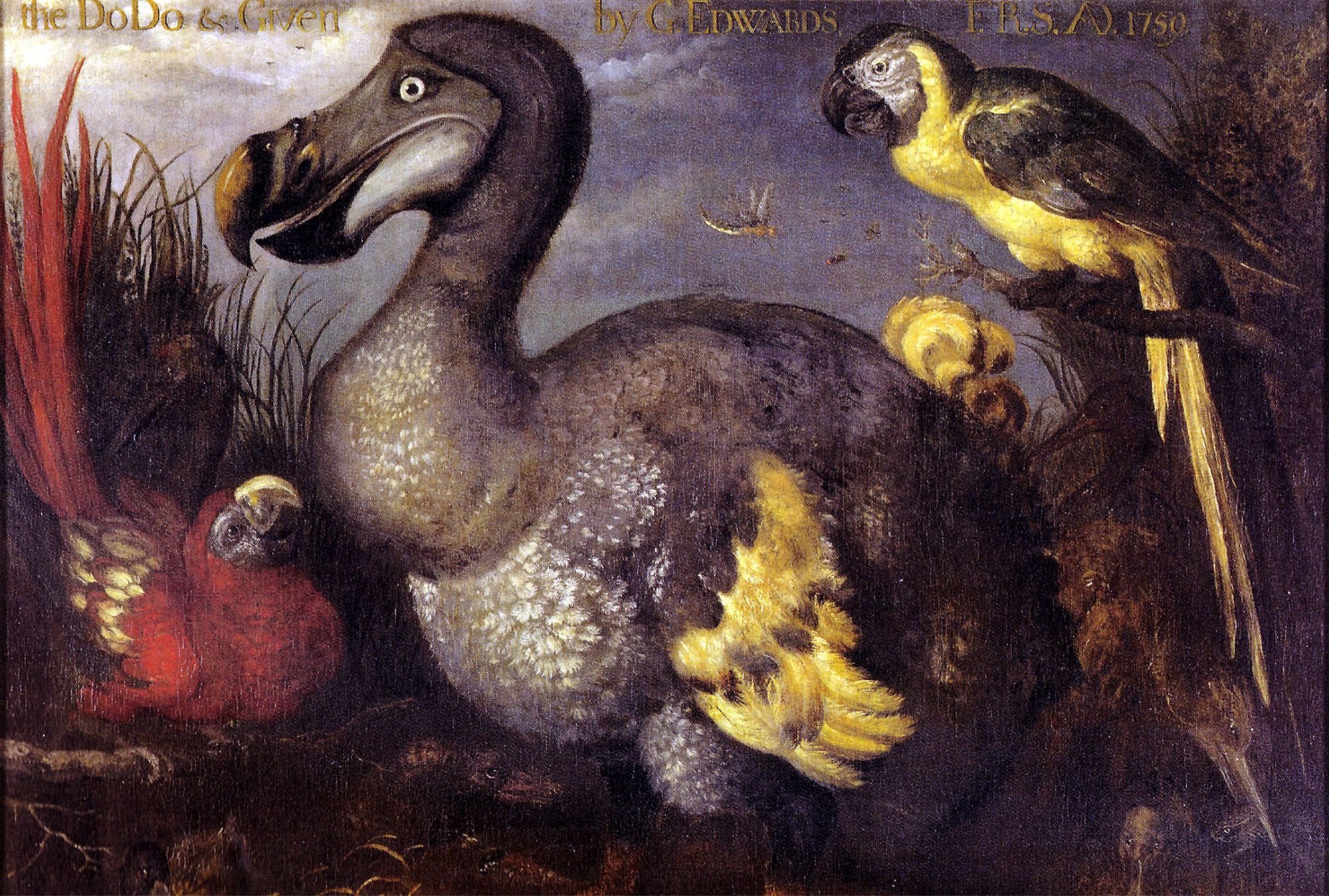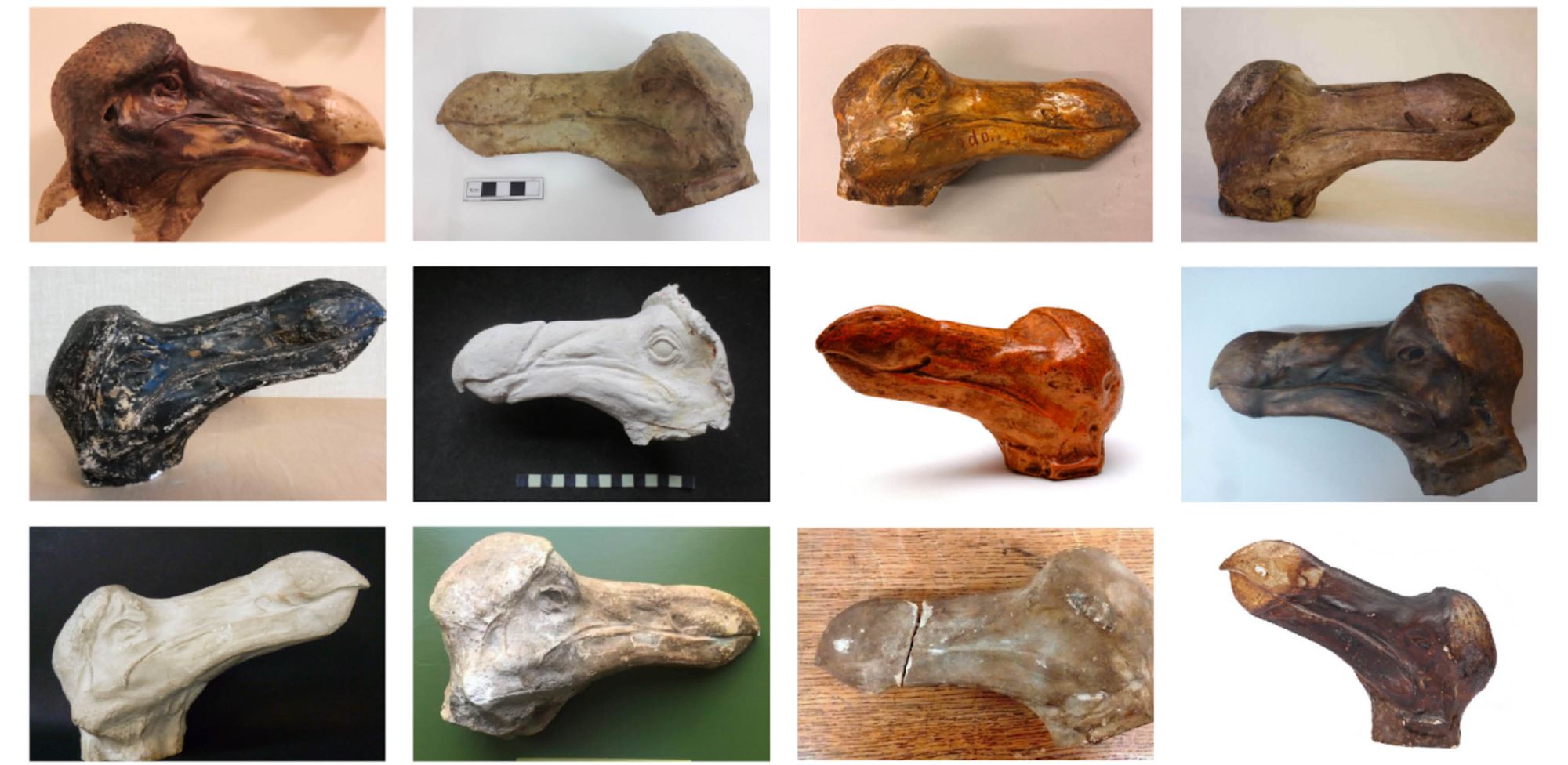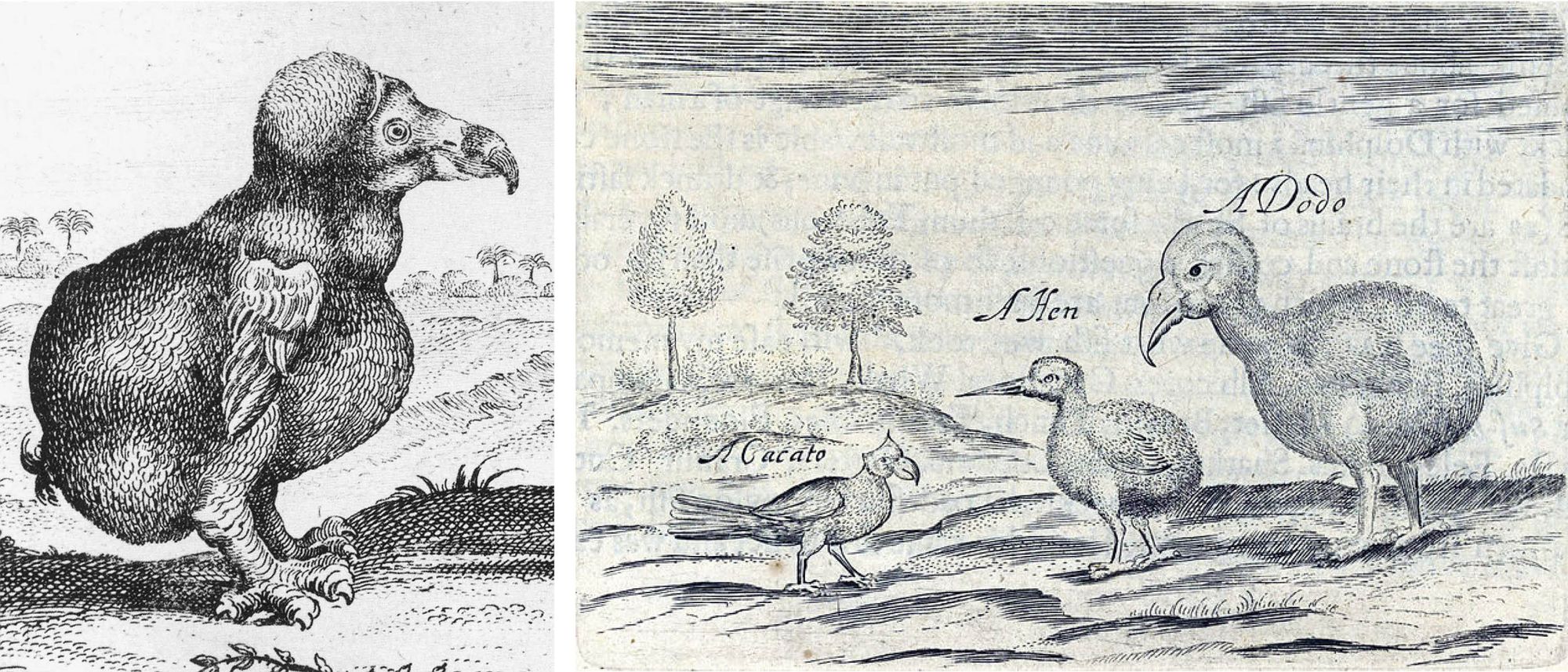
The doors of the National Museum of Scotland granted me entry into a lifelong fascination with Natural History. It is the world under one roof, housing an array of different collections spanning centuries and species of all shapes and sizes. The long-extinct creatures are particularly compelling because—unlike the animals that are still with us—the museum is the only place they can be seen. In this way, the building is a time machine, a facilitator of uncanny encounters. As well as plunging into vast global histories, this particular museum enables me to turn back through autobiographical time. It is a portal through which I can revisit my childhood.
Despite a significant revamp in the mid-2000s, the museum has remained largely unchanged throughout my lifetime as a visitor. This gives me a comforting sense of familiarity, but a bitter aftertaste lingers, and the museum’s immutable nature leaves me perturbed. Indeed, what’s on display is “Natural History,” as opposed to the “Natural Present” or “Natural Future.” The museum portrays an idea of nature that is fixed within an isolated microcosm in which time has been distorted, then paused. The permanence of the exhibits sits in stark contrast to the rapidly shifting landscape of the “real” (or outside) world. In natural history museums, extinction is posed as if it were merely a phenomenon of a bygone era instead of an ongoing daily occurrence—either the museum hasn’t noticed or just can’t keep up.
“In natural history museums, extinction is posed as if it were merely a phenomenon of a bygone era instead of an ongoing daily occurrence.”
Despite my criticisms, I still regularly visit the National Museum. Ascending through the building is like flicking through the first edition of an outdated encyclopedia, turning a new page with every footstep. The architecture is expansive, reducing the visitors to comparative insignificance and placing the focus on non-human aspects of our shared world. Stairways punctuate the outline of the enormous stone-floored main hall, enabling the crowds to diverge into their chosen worlds. On the upper level, elongated balconies dilate into rooms dense with exhibits. An exhaustive collection of ancient busts and heads congregate in the afternoon sun, before jolting dissonantly into shadow. In one room, a morbid menagerie of barely-lit taxidermy bodies reveals itself as light is replaced by darkness, and sculptures are substituted for animal skeletons. A doorway connects, but also separates, the two rooms. Framed first by the rectangular opening in the wall and then again by its display case, appears Raphus cucullatus, otherwise known as the Dodo. With its back turned to the rest of the creaturely kingdom, it stands in strange isolation. It is peripheral, both spatially and symbolically—not quite animal, not quite artifact; somewhere between the two, in defiance of classification.
The bird in the box
Standing before this lonely display case, I am afforded the opportunity to look at a bird that has not been seen (alive) by humans since 1662. I struggle to look in, as the glass wears a cloak of reflections. What I see most clearly is not what’s in front of me, but rather what is behind me—I see myself, seeing. What at first glance appears to be a window into another world is actually a mirror. In the background of the reflection is The Grand Gallery, a classic feat of Victorian engineering. Enormous cast-iron pillars erupt from the floor, flying to the heavens before collapsing in on themselves to form an arched roof. It resembles both a rib cage and (more fittingly) a birdcage, in which both me and the bird I am attempting to look at are trapped. Confined in the tiny space together, our bodies merge as one. I begin to see myself as an artifact, something like the Russian Alkonost or the Siren of Greek mythology, the sort of bird-woman-hybrids I have seen before in other museums, immortalized in marble or stone.

We collude on the glass surface, sharing each other’s form. The fabric of my clothing coalesces into feathers. My arm, folded against itself, takes the shape of a wing. My bent spine follows the curvature of its neck, upwards to where a large beak protrudes from my head, in place of my nose. The only truly distinct feature: a yellowy eye, cutting through our shared shadowy body, almost ghostly. The bird gazes out, transfixed and unflinching. This is its future, 360 years after death.
“The animal I was looking at wasn’t real but a replica. [...] I was confronted with an object produced with such a high degree of workmanship that I had been convinced it was an animal”
Despite having seen the dodo countless times before, the afternoon light had painted a portrait quite unlike those I had seen before; an animal polluted with humanness. I needed to immortalize this mysterious creature, preserving it on film. Pressing the shutter, I shot at the dodo. In the fortnight it took to develop the film, I discovered something that fundamentally altered how I would see the dodo from that point forward. The animal I was looking at wasn’t real but a replica. It was a fabrication.
Animal artifice
The word fabrication has a double definition. According to the Cambridge dictionary, in one sense it refers to “the act of producing a product, especially in an industrial process,” and in another, it is “the act of inventing false information in order to deceive someone, or the false information itself.” I had looked for a long time before seeing the dodo as both.
I was confronted with an object produced with such a high degree of workmanship that I had been convinced it was an animal (albeit one that had died hundreds of years ago). Having previously noted the skeletal qualities of the National Museum’s building, I would now understand the dodo’s internal structure as a similar architecture: a metal armature built in place of bone. The feathers that I momentarily saw as my own were in fact not the dodo’s either but most likely those of a duck. It was indeed a hybrid—an assemblage of organic and inorganic materials (metal, clay, plastic, glass), but not a single trace of dodo to be seen. Not only was it not real, but it wasn’t old either. Like me, this thing was born in the nineties.
The Edinburgh dodo is not alone in its artifice. As the most famous human-induced extinction of all time, no natural history museum in the Western world feels complete without a dodo. However, all but 12 are fake. The disappearance of the dodo was two-fold. Although the primary loss was first to extinction in 1662, the second loss was not in life, but in death.
A double death
Careless preservation of dodo specimens saw them damaged, decayed, and destroyed over time—little did the collectors know, they would not be replaceable. Only fragments remain, leaving dissected dodo bodies displaced across the world. A skull in Copenhagen and a beak in Prague are among the 26 “significant” remains of dodos that are left. Another is at Oxford’s Ashmolean Museum of Art and Archaeology—a particularly renowned dodo, as the body was rumored to have been burnt to prevent the spread of insects to other specimens. Conjuring up images of a phoenix, the foot and head were rescued from the flames at the last minute and live on in the collection to this day. Having been cloned in a range of materials, these artificial birds have migrated to museums across the globe. The head is now the most reproduced piece of the dodo puzzle. Although not original, the reproduced heads are among the truest representations of the dodo—offering objectivity within a largely subjective history of the animal.

Western fabrication of the dodo was a small part of a wider fabrication of the bird’s homeland—the island of Mauritius, the only place in the world where dodos ever lived. From the mid-1600s onwards, Mauritius was colonized in succession by the Dutch, the French, and the British. Prior to this, the dodo existed without any natural predators. With easy and abundant food sources, the birds became bigger and stronger, and so too did their population size. Their disproportionately large bodies and their position at the top of the food chain resulted in the dodo’s wings eventually becoming obsolete. They were, for a time, invincible. However, fearlessness and flightlessness—once a signifier of their ecological dominance—was part of their undoing. The ships arriving on the island didn’t just carry people but also rats, cats, and pigs; this radically altered the ecosystem, with devastating consequences. These invasive species were collateral damage; their predatory nature and disease-carrying bodies acted as unknowing weapons of biological warfare. The colonial occupation of Mauritius fundamentally altered the bird’s way of life; copy-pasting European people, animals, and ideas into the context of the dodo staged a new reality for the bird, which decontextualized and destabilized its existence to the point of demise.
In the 17th century, except for those living in or conquering Mauritius, people doubted whether the dodo actually existed, and the erasure of the dodo has carried on over the centuries. In the mid-19th century, the Mare aux Songes Swamp (formerly home to a large population of dodos) was filled with rubble to curb a malaria epidemic. More recently, a further portion of this land—the last known place on Earth to contain dodo remains—has been decimated to make way for airport runways and a hotel. This swamp-turned-cemetery is a landscape erased of its nature by human domination. The dodo’s world is a lost one.
Portraits of the dodo
The life of the dodo far predated the invention of the camera, and thus—unlike my experience in the museum of accurately reproducing what I’d seen on film—no photographs of the living dodo exist. Instead, the birds were captured in pencil and paint. It was common for the artists back in Europe to have never seen the bird, instead working on fleshing out and refining crude sketches brought back by the colonizers. As a result, the images produced of the dodo likely depict inaccuracies. However, a lack of technique was not the only thing that skewed the dodo; it was also bias that (mis)shaped the bird. Art is not innocent and nor is “nature” neutral. As the first settlers, the Dutch had the power to construct the European vision of Mauritius as they wished. At the time, art was used to reinforce science using illustrations to disseminate and popularize ideas. Although often exaggerated and even entirely fictitious, these visual accounts of foreign lands were posed as factual; a sole and unarguable truth. Loaded with misconceptions, they galvanized further actions to “civilize” the “wild” otherness depicted in the scenes. Between the biased eye and the unskilled hand, truth is lost.
“Although often exaggerated and even entirely fictitious, these [colonial] visual accounts of foreign lands were posed as factual; a sole and unarguable truth.”
The first known depiction of Mauritian wildlife by the Dutch was an engraving made in 1602. In the top right, a stout, large-beaked bird can be seen strolling toward the edge of the paper in an ungainly manner. The caption reads “figure 2 - Walghvogel,”which bluntly translates as “disgusting bird.” Although it is unclear why the dodo was perceived as so odious, it is likely due to an inherent Eurocentric bias around beauty ideals ascribed to animals, which the dodo simply didn’t fit. Their “dull” plumage and sturdy bodies didn’t exude the same otherworldly elegance as other birds like parrots and parakeets, whose small and vibrant bodies were like living ornaments. Furthermore, on a more tangible level, the dodo’s foul-tasting flesh meant it couldn’t be used as a resource—which discredits another common misconception that the species was eaten into extinction by humans. Without usefulness or attractiveness, the dodo became something to dislike. This defamation was concretized through the etymology of the bird’s name, which is thought to have come from “dodaars,” where “dod” means lazy or dull, and “ars”’ means arse. By the 1630s, the shortened alias “‘dodo” was adopted, less blatant but with all the original objections. This prejudice was mixed with paint and applied to canvas.

As the 1600s went on, the declining population of the dodo heightened its value. The magical monster was disappearing before their eyes, and so the dodo shifted from a subject of disgust to desire for European painters. As a result of the dodo’s scarcity, artists often had no access to a live model. Instead, sketches were produced using (poorly) taxidermied specimens and captive animals as references. These birds were kept in menageries and even a 17th-century London townhouse.

A pivotal example of the bird documented under similar conditions is that of Dutch Golden Age painter, Roelant Savery. In 1626, Savery painted a live dodo which was kept in Holland by the so-called “father of British ornithology,” George Edwards. Savery was part of the Mannerism or Late Renaissance movement, which rejected the realist ideals of the High Renaissance in favor of a more stylized approach. The Mannerists were famed for distorting and obscuring the forms of their subjects, often resulting in the figures being perceived more as decorative objects than living beings. The inconsistencies between Savery’s depiction and the earlier Mauritius-based sketches by other artists don’t just evidence the shifting artistic influences of the time but also call into doubt whether the claims that he painted from life are actually true. Nevertheless, the features that can be seen in his painting have become entrenched in subsequent images of the bird: a large ridged beak, a bulky physique, a wing thick with plumage, curly tail feathers, and short legs.

Jan Savery—Roelant’s nephew—also famously painted the dodo (1651), creating a near duplicate of his uncle’s depiction in terms of form and pose. English author Charles Dodgson, working under the pseudonym Lewis Caroll, is said to have visited Jan’s painting as it hung on the walls of the Oxford Museum, drawing inspiration for his character (simply named “Dodo”) in Alice in Wonderland. It is thought that Dodgson, who spoke with a stutter, would introduce himself as “Do-Do-Dodgson,” hence choosing this creature to represent himself in his works.
Arguably, it is the relation between these two works that initiated the bird’s transition from natural history to popular culture. The dodo is not only immortalized in literature but through everyday language, shifting from creature to concept. The expression “dead as a dodo” is used to mean “no longer effective, valid, or interesting.” The latter part seems ironic to me. Thousands of species have gone extinct, yet it is the dodo that remains to be the most prominent and captivating. 460 years have passed—we still haven’t forgotten, and it seems that we never will.
Dodos died because they trusted humans too much
In my unraveling of the dodo, among all the twists and tangles, one thing stayed with me. It was a headline reading: “Dodos died because they trusted humans too much.” In a deluge of other speculations, it was a statement that felt decisive and clear. I didn’t check the article’s authenticity or basis and instead moved on, satisfied with my findings. However, the deeper I delved into the dodo, doubt crept in surrounding the statement’s accuracy. I needed to revisit what I had read. I attempted to retrace my footsteps back through my research but with no luck. History was lost, this time to my internet browser. All evidence that the article ever existed had vanished—that is, if it had ever transpired at all; I thought about the skeptics who, having never seen a dodo, assumed them mythical. Knowledge of the museums’ fakery arouses the same feeling of suspicion, and I thought about the portrayal of the dodo that this headline invoked—harmless, innocent, childlike. I was reminded of myself in the National Museum, wide-eyed and open-minded, ready to believe everything I was shown. I, too, had trusted humans too much.
“[Natural history museums] are conventionally considered to store collections of facts, but much of what we are faced with is not reality but instead (convincing) reconstructions of it.”
Now, I see the dodo as an allegory. It has something bigger to tell us about the faith and belief we place in what we see in museums. These institutions are conventionally considered to store collections of facts, but much of what we are faced with is not reality but instead (convincing) reconstructions of it. The whole operation relies on the viewer’s suspension of disbelief—to temporarily allow oneself to believe something that might not be true—especially when looking at dead animals and seeing them as alive. This is further exacerbated by the fact that the animals are not animals at all, but human-made assemblages. Truth is invented through a series of artificial habitats, staged interactions, and fabricated creatures. Entire species are reduced to, and represented by, a single specimen, while a small placard turns the complex and nuanced stories of the animals’ lives into reductionist anthropocentric summaries. Under the pretense of educating us about our place in the animal kingdom, all it shows is our separateness, our disconnect, and inordinate power in manufacturing nature as we so desire. It is no fault of the visitor, but so rarely do we look beyond what’s on display to question why—and to what effect—the museum has conditioned us to be this way.
The dodo is a particularly interesting construct. In the absence of genuine physical remains, this long-gone bird has been reincarnated through the production of images and narratives, cementing its status as an icon of extinction. Visiting the museum is an act of remembrance that keeps this creature alive in our imagination. However, it is said that each time a memory is recollected, the original is overwritten and changes, even if only slightly. In this way, the dodo becomes part of a perpetual cycle of breaking and (re)making through the eyes and hands of humans. My photograph and subjective description of the model of the dodo join the ever-growing chain of history—one that is neither natural nor neutral.
Eva Jack (she/her) graduated from Design Academy Eindhoven with a Masters in Social Design in 2019. Since then, she has been teaching at Edinburgh College of Art and working on her own art practice, including the short film “Whale Watching” made for the exhibition Aquaria at the MAAT Museum in Lisbon. In 2021, Eva founded Fragment Found, an online, community-generated archive of pottery sherds.
This text was produced as part of the Against the Grain Fellowship.














